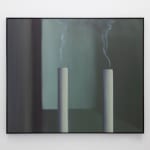
Gavin Turk 1967
Rauchende Kerzen, 2023
Oil on canvas
100 x 120 cm. (39 3/8 x 47 1/4 in.)
Copyright The Artist
